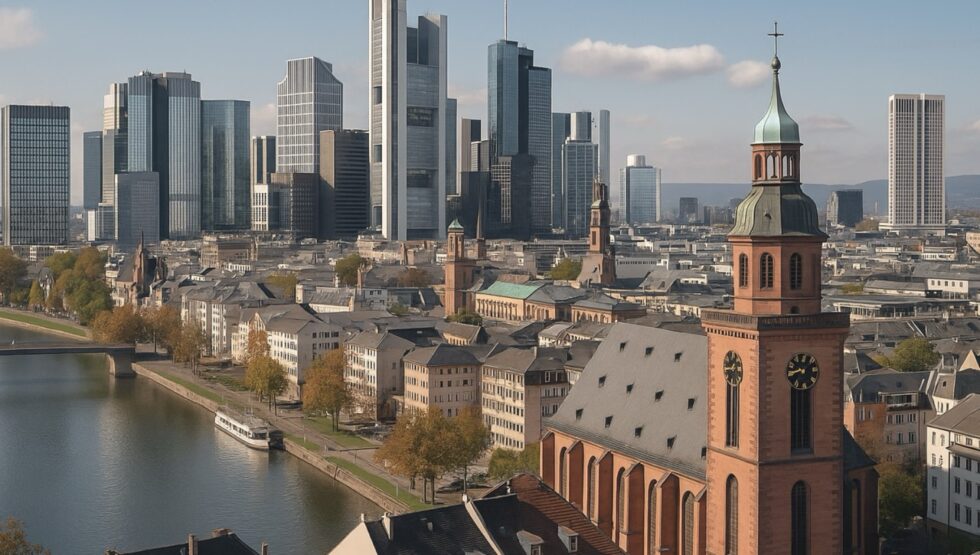Why Rhein-Main, Ruhrgebiet and DACH Are Key to Understanding Europe's Real Structure

What do we actually mean when we talk about regions like Rhein-Main, the Ruhr area, or the DACH region? These terms are more than geographic shorthand — they stand for cultural identity, economic structures, and a shared sense of history that shapes how societies and markets operate, reports G.Business.
Yet for many, “region” remains an abstract concept. Most people recognize names like "Benelux" or "Alpine region" from headlines, wine bottles, or weather maps. But behind the familiar labels lies a web of historic migration routes, shared infrastructure, dialects, and cross-border business strategies. In an increasingly interconnected Europe, understanding regions is essential — for politics, logistics, tourism, and even personal identity.
What is a region — and why is it not just geography
In German usage, the term Region does not refer to an official administrative unit (like a Bundesland or Landkreis) but rather to a flexible construct that can be defined:
- Geographically (e.g., Rhein-Main, Donau-Alpen)
- Culturally or linguistically (e.g., DACH, Nordics)
- Economically (e.g., Metropolitan regions)
- Through transport corridors (e.g., ICE routes, airport zones)
Regions often cross national borders or unite cities through shared commuting patterns, infrastructure, or supply chains. They emerge where people settle — especially along rivers and trade routes — and where economies and languages overlap.
Rhein-Main: A financial and logistical powerhouse
The Rhein-Main region is a major European metropolitan area built around the Rhine and Main rivers. It includes:
- Core cities: Frankfurt am Main (the central hub), Wiesbaden, Mainz, Darmstadt, Offenbach
- Territories: Parts of Hesse, Rhineland-Palatinate, and northern Bavaria
Strategic Significance:
- Frankfurt Airport – one of the busiest in Europe
- ICE rail junctions – enabling nationwide and cross-border connectivity
- Headquarters of the European Central Bank (ECB), Lufthansa, Deutsche Börse
This region exemplifies how geographic location (river confluence, centrality) and infrastructure create an international gateway for finance, aviation, and trade fairs.
The DACH Region: Language as an economic glue
DACH is not a geographical region but a marketing and strategic term, widely used in business:
- D = Deutschland (Germany)
- A = Austria
- CH = Switzerland
Together, these countries form a high-value market of nearly 100 million people with shared language and cultural values. Corporations such as Siemens, SAP, and Bosch deploy dedicated “DACH teams,” align media campaigns, and distribute products uniformly across all three countries.
Key Features:
- Common language (German)
- Shared consumer behavior
- Legal compatibility in some sectors
- Ideal region for regional headquarters or logistics coordination
Ruhrgebiet: Industrial legacy and urban transformation
The Ruhr Area, stretching from Dortmund through Essen to Duisburg, is Germany’s largest urban agglomeration.
- Once defined by coal, steel, and heavy industry
- Now undergoing transformation through cultural regeneration, green innovation, and education
The Ruhr region showcases how historical industrial zones reinvent themselves — turning mining sites into museums, power plants into tech parks, and identity into a brand.
Functional regions across Europe
These German examples are part of a wider European model of “functional regions.” Here are a few prominent ones:
| Region | Basis | Key Cities | Specialization |
|---|---|---|---|
| Rhein-Ruhr | Industrial corridor | Cologne, Düsseldorf, Essen | Manufacturing, logistics |
| Alps | Geography | Munich, Innsbruck, Zurich | Tourism, environmental policy |
| Nordics | Cultural-political unity | Stockholm, Oslo, Helsinki | Social systems, design |
| Benelux | Historic union | Brussels, Amsterdam, Luxembourg | Trade, early EU foundation |
| CEE | Emerging economic space | Prague, Warsaw, Budapest | Outsourcing, industry |
Why rivers still define regions today
Many historical regions align with rivers — Europe’s original arteries of civilization and commerce:
| River | Associated Regions | Function |
|---|---|---|
| Rhine | Rhein-Main, Rhein-Ruhr | Main European waterway |
| Danube | Alpine-Danube-Adriatic | East-West link across multiple countries |
| Elbe | Hamburg, Dresden corridor | North Sea trade access |
| Main | Part of Rhein-Main | East-west inland connection |
River systems are not just relics of the past — they remain crucial for transport, tourism, agriculture, and urban development.
Why understanding regions matters in 2025
In today’s complex Europe, where administrative borders often fail to reflect economic or cultural realities, thinking in terms of regions offers clarity. Here’s why:
- Economic relevance: Regions guide where investment flows, where talent is recruited, and where infrastructure is needed.
- Cultural cohesion: Regional identity shapes dialects, traditions, and social cohesion.
- Policy implementation: Regional clusters are used in EU structural funding, climate planning, and digital infrastructure rollouts.
- Media & marketing: Media agencies plan campaigns by region, not country.
For example, climate adaptation projects in the North Sea region focus on flooding and wind energy, while those in the Alpine region focus on snow loss and tourism transitions.
Where business opportunities are born
Regions are not only cultural or geographic markers — they are active engines of innovation, investment, and market potential. For businesses, understanding where value clusters emerge is critical:
- Rhein-Main offers unmatched access to global finance, logistics infrastructure, and multilingual talent — ideal for fintech, aviation, and international trade.
- Ruhrgebiet is becoming a hotspot for green energy, circular economy startups, and urban redevelopment. Its dense population and university network make it attractive for innovation hubs.
- The DACH region provides a unified market with high purchasing power, regulatory stability, and a shared language — a strategic base for SaaS companies, healthcare, manufacturing, and B2B services.
Companies that tailor their strategies to regional dynamics gain access to better localization, faster scalability, and stronger cultural resonance.
From targeted real estate development to media placement, from recruitment pipelines to export strategies — regional intelligence is becoming a must-have competitive advantage.
Stay connected for news that works — timely, factual, and free from opinion. Learn more about this topic and related developments here